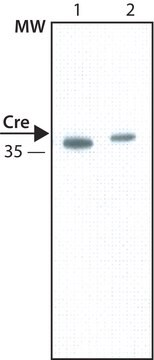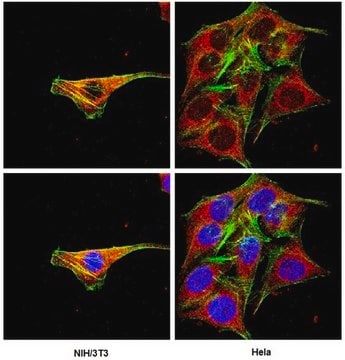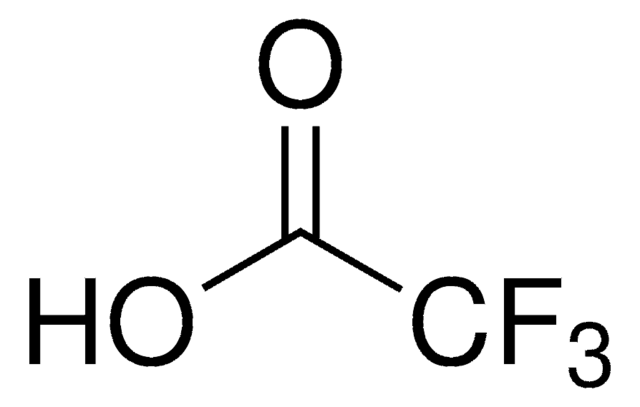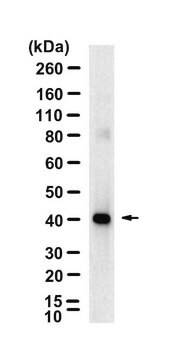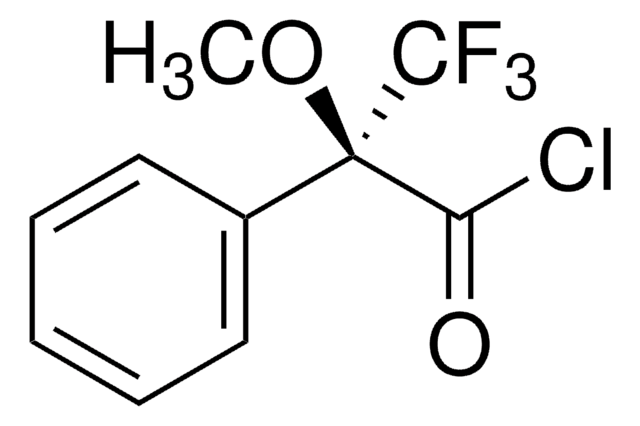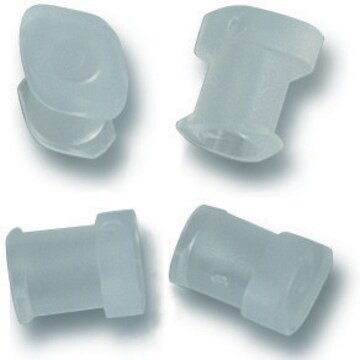69050
Anti-Cre Antibody
Novagen®
Sinonimo/i:
Cre Recombinase Antibody
About This Item
Prodotti consigliati
Forma dell’anticorpo
purified antibody
Livello qualitativo
Tipo di anticorpo
primary antibodies
Produttore/marchio commerciale
Novagen®
Condizioni di stoccaggio
OK to freeze
avoid repeated freeze/thaw cycles
Condizioni di spedizione
wet ice
Temperatura di conservazione
−20°C
modifica post-traduzionali bersaglio
unmodified
Descrizione generale
Evaluated by Western Blotting with Recombinant Cre-His.
Western Blotting Analysis: Representative lot data.Recombinant Cre-His loaded at 20 ng/lane (Lane 1) and 10 ng/lane (Lane 2) was probed with Cat. No. 69050-3, Anti-Cre (1:10,000 dilution). Proteins were visualized using a Donkey Anti-Rabbit secondary antibody conjugated to HRP and a chemiluminescence detection system. Arrow indicates Cre (~39 kDa).
Attenzione
Note legali
Non trovi il prodotto giusto?
Prova il nostro Motore di ricerca dei prodotti.
Codice della classe di stoccaggio
10 - Combustible liquids
Classe di pericolosità dell'acqua (WGK)
WGK 1
Punto d’infiammabilità (°F)
Not applicable
Punto d’infiammabilità (°C)
Not applicable
Certificati d'analisi (COA)
Cerca il Certificati d'analisi (COA) digitando il numero di lotto/batch corrispondente. I numeri di lotto o di batch sono stampati sull'etichetta dei prodotti dopo la parola ‘Lotto’ o ‘Batch’.
Possiedi già questo prodotto?
I documenti relativi ai prodotti acquistati recentemente sono disponibili nell’Archivio dei documenti.
Il team dei nostri ricercatori vanta grande esperienza in tutte le aree della ricerca quali Life Science, scienza dei materiali, sintesi chimica, cromatografia, discipline analitiche, ecc..
Contatta l'Assistenza Tecnica.